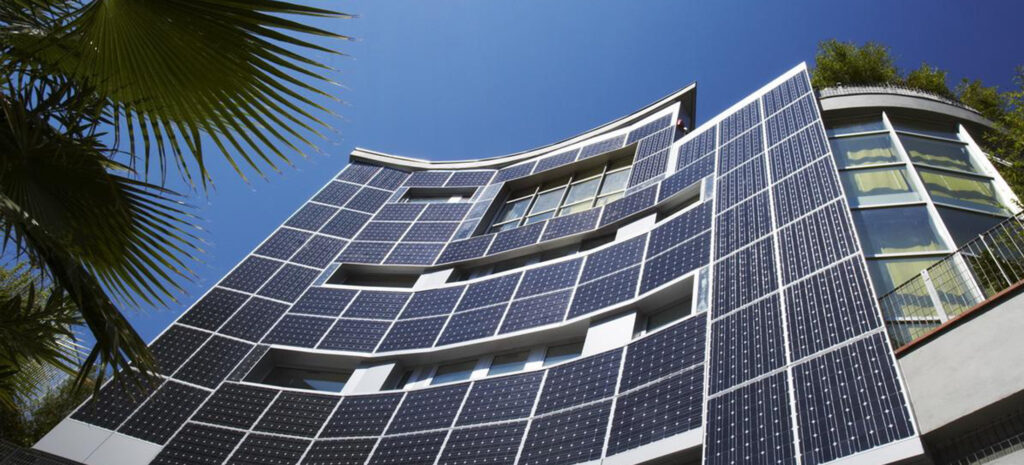1. What is BIPV?
BIPV is Short for Building Integrated Photovoltaics, refers to the photovoltaic component integration to the Building palisade structure, such as roof and facade, etc.

2. What are the applications of BIPV?
Pv can be integrated into many different components within the building envelope:
1) Solar panels can be integrated into the facade of the building, complementing or replacing traditional view or spandrel glass. Often, the installations are vertical, reducing access to available solar resources, but the building’s large surface area can help compensate for the reduced power.
2) Photovoltaic power generation can be incorporated into the design of awnings and zigzags on the building facades. These increase access to direct sunlight while providing additional architectural advantages, such as passive shading.
3) The use of photovoltaics in roofing systems is a direct replacement for slatted and jointed metal roofing and traditional 3-TAB asphalt shingles.
4) Using photovoltaics for skylight systems can be both an economical use of photovoltaics and an exciting design feature.

3. What are the parts of BIPV system?
A complete BIPV system includes:
1) PV module (may be thin film or crystal, transparent, translucent or opaque);
2) A charging controller for regulating the flow of power into and out of the battery pack (in a stand-alone system);
3) A power storage system, usually consisting of a public grid in a utility interactive system or multiple batteries in a stand-alone system;
4) Power conversion equipment, including an inverter that converts the DC output of the PV module into AC power compatible with the public grid;
5) Backup power, such as diesel generators (optional — usually used in standalone systems)
6) Proper support and installation of hardware, wiring and safe disconnection devices.

4.What are the advantages and benefits of the BIPV system?
By being used as both a building envelope material and a generator, the BIPV system can save on material and electricity costs. Reduce fossil fuel use and ozone-depleting gas emissions, and increase architectural interest in buildings.

5. What is the difference between BIPV and BAPV?
The main difference between BAPV and BIPV is the way they are designed and integrated into the relevant buildings.
BAPV (Photovoltaic for Building Applications) method:Additional installation structures and moving guides are used to connect the modules directly to the building after completion, for example during energy retrofit projects.This is the approach used in traditional PV solutions. BAPV can increase the building load and affect the overall effect of the building.
BIPV (Building Integrated Photovoltaic) method: replacing traditional building components with materials that contain solar modules. Integrated into the building structure, the BIPV system is an integration of photovoltaic products and building materials, which can replace traditional building materials such as glass, stone and tile. Not only to meet the power generation needs, but also as part of the building. Here, PV modules provide shelter from wind, rain, heat, generally during the start of a construction project, or in the case of a part of the building being renovated (roof, Windows, cladding, etc.).
Maysun Solar is a company specializing in the production of solar panels. The products are available for you to choose and add to your own PV system. If you need, please contact us.




